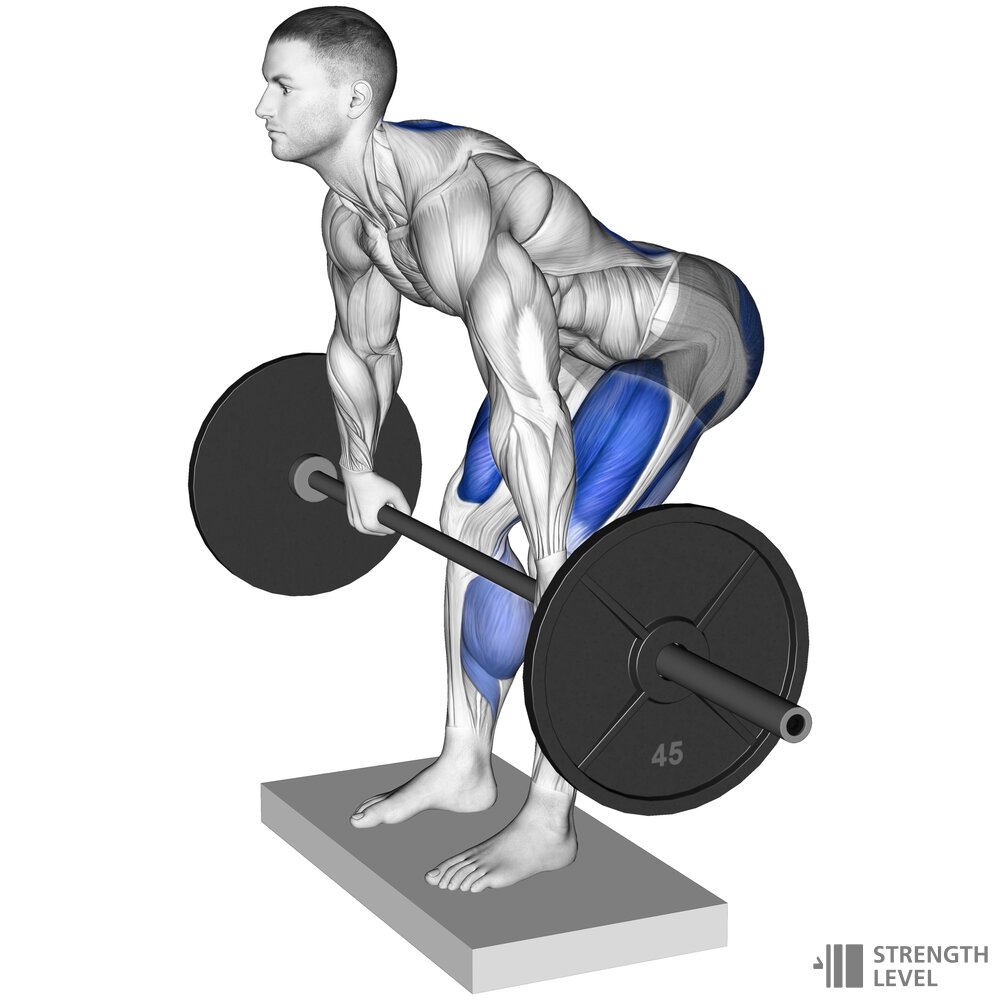Some people reading the title might wonder what this guy is talking about. “The deadlift (conventional) itself already builds muscle!” And obviously, these people are right.
The Deadlift is an excellent stimulant for the posterior chain (hamstrings, glutes, low, mid, and upper back). But that’s only for those just starting their lifting journey. Experienced or intermediate lifters won’t be as lucky to use the Deadlift for building muscle; the novelty stimulant will subside at some point, making it hard to build long-term muscle with the Deadlift.
What I will cover in his article is why the Deadlift is limited regarding long-term muscle growth and shows different variations that are better for muscle growth along with reps and sets so you can keep squeezing out those sweat gains no matter if you are beginner, intermediate, or advanced!
Why the DeadLift Lacks Hypertrophy
As I said in the opening, the Deadlift can build muscle, but that’s mainly in the earlier stages of lifting. That’s because newbie lifters get novelty stimulants from doing just about anything in the gym.
However, a regular deadlift can become less effective for muscle growth as you become more advanced.
Why is that?
Besides the novelty stimulant dissipating, the Deadlift is more of a strength developer with some muscle-building benefits than the other way around. You lift the weight from your most vital position with a standard deadlift. Regular deadlifts lack any leverage disadvantage for the targeted muscle, meaning they will not have to work as hard to move the weight.
On top of that, people usually rush the eccentric (lowering) portion of the movement.
Why?
Because we tend to focus more on how much weight we can lift. That is counterintuitive if your underlying goal is to build muscle. I would leave conventional deadlifts to powerlifters. Because most of us want to build muscle and become stronger, save your time with the normal Deadlift. Instead, try getting stronger at these variations, improving muscle growth!
Deficit Deadlifts (Glute focus)
At the start of the Deadlift, there’s a minimal stretch at best, meaning we are not stretching the muscle enough for it to have significant muscle tears, an essential component for building muscle.
That’s where increasing the range of motion comes into play with deficient deadlifts. Start by standing on a slightly elevated surface like a thick plate, and perform your standard deadlift technique. You will feel some deep stretches at the bottom position that are impossible to achieve with the standard Deadlift. Increasing the range of motion with intensity on any exercise is a surefire way to build muscle, and better yet, you won’t need to use as much weight; we are purposely making ourselves slightly weaker to get a better growth single sent to the target muscles.
This is great for the joints and long-term consistency in the gym. You can also do a sumo-deficient deadlift as well. Next, let’s look at the snatch grip deadlift.

Snatch Grip Deadlift. (Upper back/glutes)
I like executing this movement by going a little wider than my normal deadlift stance and grabbing the bar as wide as possible without compromising your grip; if you have difficulty establishing a grip, you can use straps.
Keep the chest high as you repeat the movement. With the wide grip, we can stress the back twice as much as a standard deadlift grip. The glutes also reveal more of a stretch because we are lower to the group, making this movement a certified posterior chain builder.

Stiff Leg Deadlift (Hamstrings)
How do we isolate the hammies more with a deadlift? Well, keep the legs almost straight with a soft bend in the knee. Doing so directs the tension straight to the hamstrings.
The hammies are often overlooked in traditional deadlifts because the knees come forward more when we lower the weight, minimizing the stretch on the back leg. Keep the chest high and rotate your hips toward the floor. As you lower the weight, turn your pelvis to the floor. Doing so pulls on top of the hamstring insertion, giving the muscle a nice stretch.
Set and Reps
Before we go into the reps and sets, I suggest you program most of these deadlift variations at the end of the week because, like regular deadlifts, these moves can be taxing and should be put toward the end of the week. I like to shoot for 3-5 sets and anywhere from 6-15 repetitions. Make sure you are also doing some sort of hamstring curl variations to work on both motions of the hammies.
Final words
Remember, these moves are meant to build muscle, so you will be placed in a weaker position, meaning you won’t have to use as much weight to get a muscle-building signal. You can always try some combination of these moves, like a stiff-legged deadlift with a snatch grip or a deficit stiff-leg deadlift. Give these variations a try and watch your body respond. Take it one day at a time, and you will be there before you know it!



